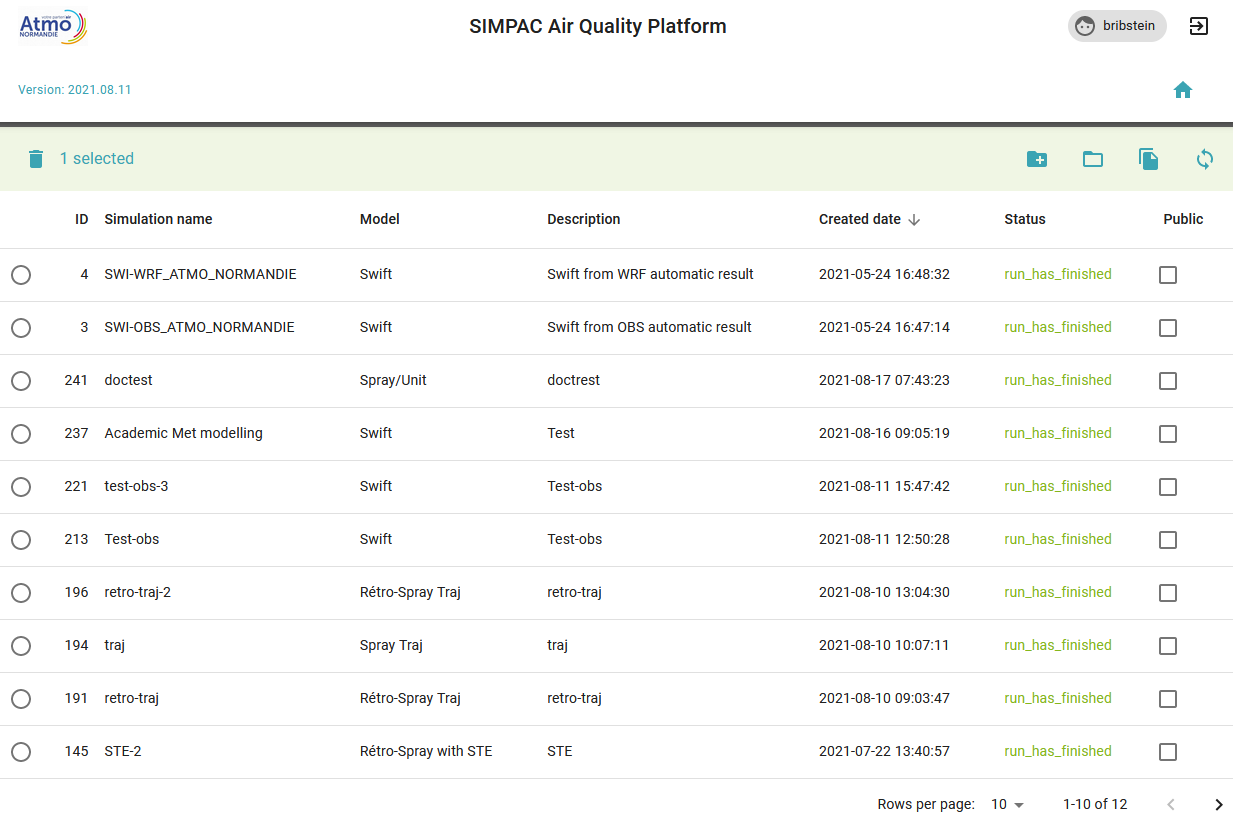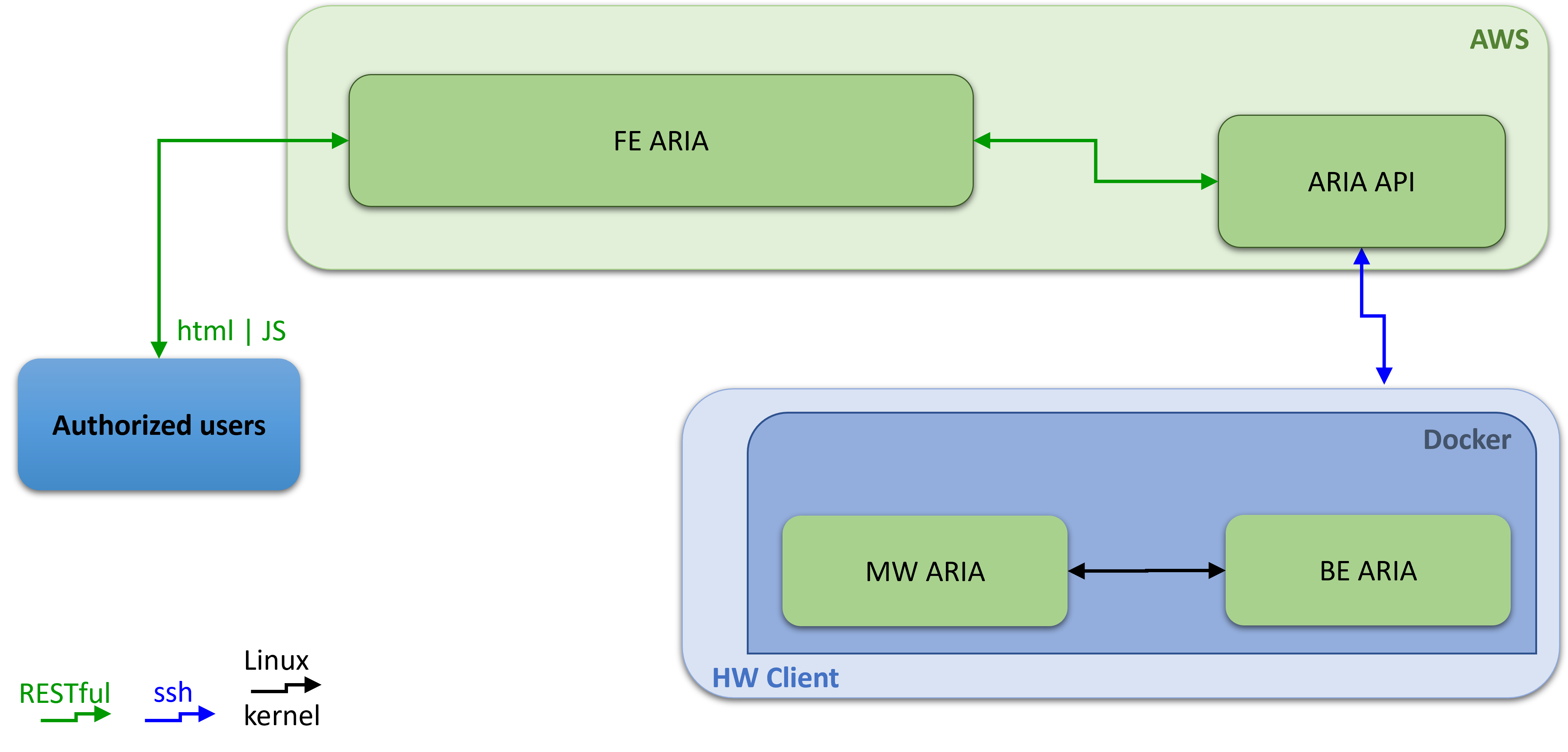Description of the SIMPAC platform¶
The scope of the SIMPAC platform¶
SIMPAC
The SIMPAC platform is a software that provides an integrated user-friendly interface, directly accessible from a Web browser. This interface allows the configuration of dispersion’s calculation by people who do not have any specific IT skills and without having to fully learn all the control files of the concerned numerical modelling.
This configuration has several benefits:
The user works in a familiar space -Web browser- from the configuration of input data to the exploitation of the results, keeping the advantages of an accessible integrated interface with only a simple internet connection (base maps, tools to export images, simulation dashboard, …)
The consideration of the existing databases (meteorological and the inventory of the major point sources) to supply it with easily accessible input databases.
The choice between different configurations for the dispersion’s calculation of various complexities to better adapt to the type of simulation targetted by the user, from the scale of a factory to an entire urban area and a region.
The SIMPAC platform¶
Accessing the SIMPAC platform is possible through the connection to a Web server, from the login and the password given to every listed user.

Secured access to the SIMPAC platform¶
The user is redirected to its platform (for instance, AtmoSud or AtmoNormandie). The SIMPAC platform is organised through different projects. Each project corresponds to a meteorological or an atmospheric dispersion modelling, included in the dashboard below:

The SIMPAC platform’s dashboard for AtmoNormandie¶
The following sketch represents the general architecture of the SIMPAC platform. The different SIMPAC platforms (for instance, AtmoSud or AtmoNormandie) share the same interface, but separate computing servers. One platform does not have access to the other’s computing server, and the same is true for the results. Users of the same platform can nevertheless share results.

General Architecture of the SIMPAC platform¶
Important
The Web server is physically hosted by Amazon Web Services (AWS). The client does not have to handle the maintenance of the Web server, dedicated to the SIMPAC operational tool. The subscription is a gage of a qualitative functioning, with the cost that this guarantee implies. A server’s replica is used to enable the evolution of the SIMPAC platform without impacting the user.
Note
The minimization of the number of exchanged data between the Web interface and the computing server has been done to optimize the system. The transferred files were carried out through SFTP and the connexions realised through SSH. As for the results, the displayed data (wind, pollutant concentration) are transferred into a netcdf format to the Web server. The images are produced and presented in order to fit the zoom level requested.
Three to five users can simultaneously be connected on each platform. This limitation is only due to the performances of the computing server. Results must be synthetic, easily exploitable and understandable in a context of emergency. These are the main reasons justifying that the surface wind and the ground-level concentration are the only variables displayed. For the dispersion modelling, in a reverse configuration, on the cartographic mode, the source location is also estimated.
Virtualisation of the SIMPAC platform¶
The simulations are conducted through a virtual machine, by a Docker insulator. Virtualization is the process of creating a software (or virtual) version of a physical entity. The virtualisation on the SIMPAC platform is interesting for several reasons:
Easier installation, deployment and migration.
The possibility to test the installation and to make some developments without altering the hosting operating system.
Dynamic allowance of the computing power (number of processors, memory, network card…) according to the needs of each application, at a given time, and not according to the initial definition of the architecture of the application.
The Docker insulator consumes very few performances on the physical entity where it is settled. The performances of the applications launched through a Docker insulator are not corrupted. The docker isolator takes up little disk space and has a very active community. Inheritance allows SIMPAC to be defined from its operating system, Ubunto16.04. The use of a Docker insulator eases a potential migration on the Cloud and the shift toward an application’s architecture serverless.